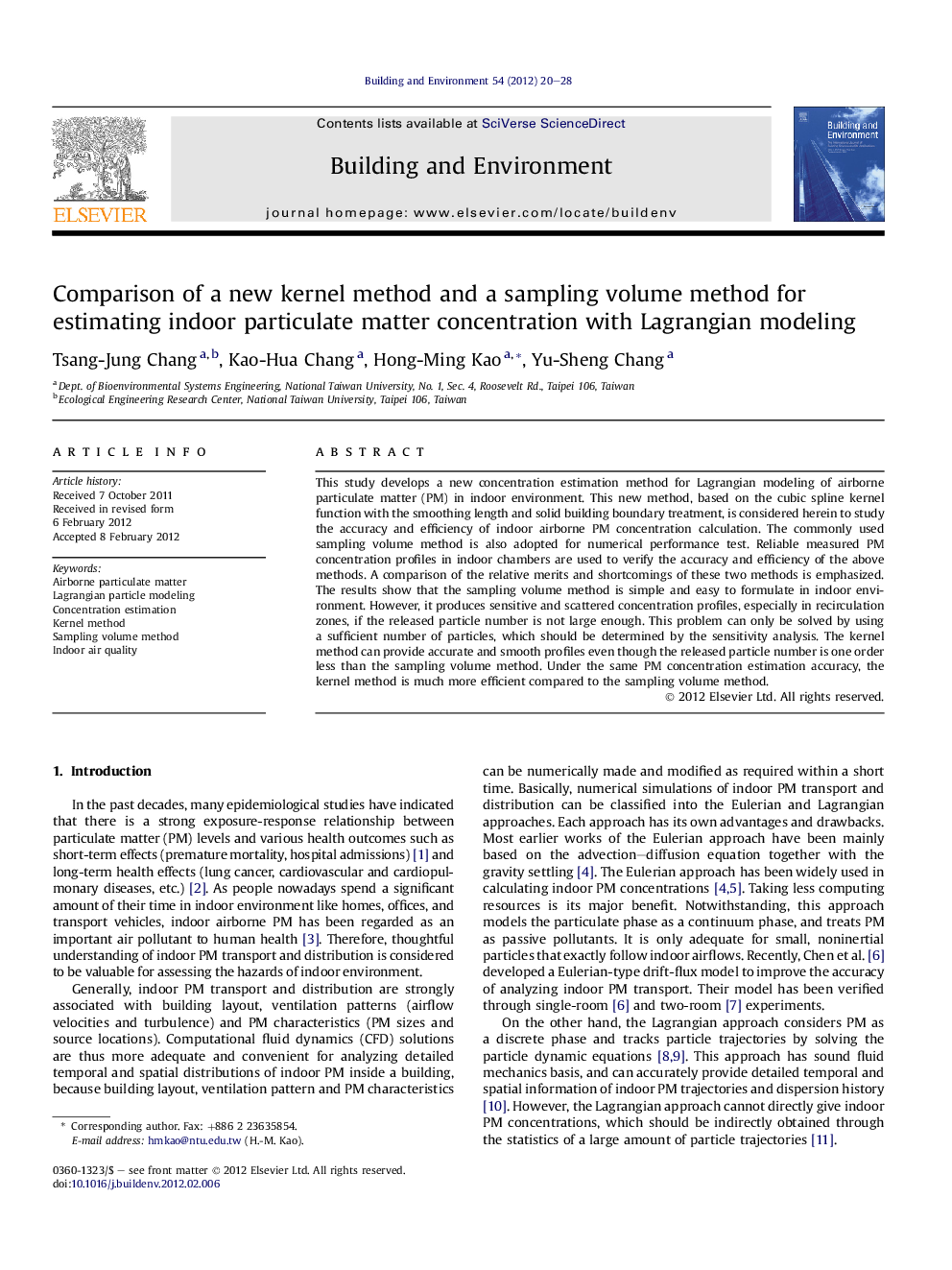| Article ID | Journal | Published Year | Pages | File Type |
|---|---|---|---|---|
| 248562 | Building and Environment | 2012 | 9 Pages |
This study develops a new concentration estimation method for Lagrangian modeling of airborne particulate matter (PM) in indoor environment. This new method, based on the cubic spline kernel function with the smoothing length and solid building boundary treatment, is considered herein to study the accuracy and efficiency of indoor airborne PM concentration calculation. The commonly used sampling volume method is also adopted for numerical performance test. Reliable measured PM concentration profiles in indoor chambers are used to verify the accuracy and efficiency of the above methods. A comparison of the relative merits and shortcomings of these two methods is emphasized. The results show that the sampling volume method is simple and easy to formulate in indoor environment. However, it produces sensitive and scattered concentration profiles, especially in recirculation zones, if the released particle number is not large enough. This problem can only be solved by using a sufficient number of particles, which should be determined by the sensitivity analysis. The kernel method can provide accurate and smooth profiles even though the released particle number is one order less than the sampling volume method. Under the same PM concentration estimation accuracy, the kernel method is much more efficient compared to the sampling volume method.
► The kernel method is compared with the sampling volume method for estimating PM concentration. ► The kernel method can provide accurate results even though the lower particle number is released. ► Under the same PM concentration estimation accuracy, the kernel method is much more efficient.
